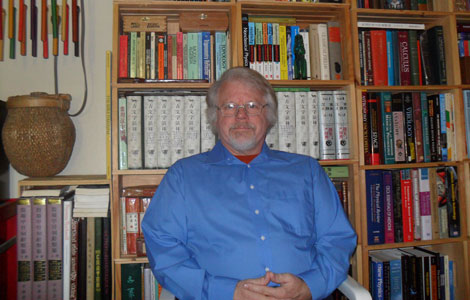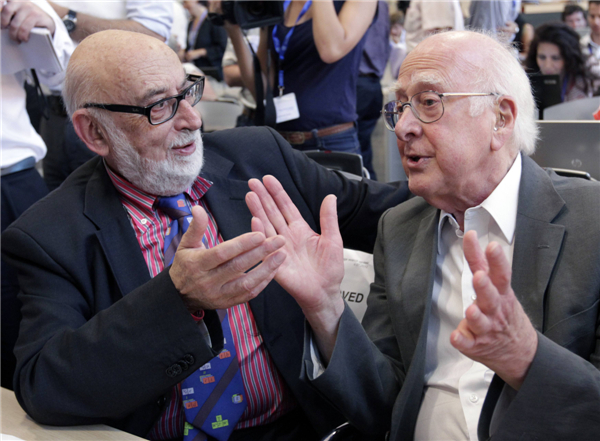Belgian, British scientists share Nobel Prize in Physics
Updated: 2013-10-08 19:52
(Agencies)
|
||||||||
STOCKHOLM - Britain's Peter Higgs and Francois Englert of Belgium won the Nobel Prize for physics on Tuesday for predicting the existence of the Higgs boson particle that explains how elementary matter attained the mass to form stars and planets.
Half a century after their original work, the new building block of nature was finally detected in 2012 at the CERN research centre's giant, underground particle-smasher near Geneva. The discovery was hailed as one of the most important in physics.
The two scientists had been favourites to share the 8 million Swedish crown ($1.25 million) prize after their theoretical work was vindicated by the CERN experiments.
To find the elusive particle, scientists at the Large Hadron Collider (LHC) had to pore over data from the wreckage of trillions of sub-atomic proton collisions.
"The awarded theory is a central part of the Standard Model of particle physics that describes how the world is constructed," the Royal Swedish Academy of Sciences said in a statement.
"According to the Standard Model, everything, from flowers and people to stars and planets, consists of just a few building blocks: matter particles."
The Higgs boson is the last piece of the Standard Model of physics that describes the fundamental make-up of the universe. Some commentators - though not scientists - have called it the "God particle", for its role in turning the Big Bang into an ordered cosmos.
The will of Swedish dynamite millionaire Alfred Nobel limits the award to a maximum of three people. Yet six scientists published relevant papers in 1964 and thousands more have worked to detect the Higgs at the LHC.
Englert, 80, and his colleague Robert Brout - who died in 2011 - were first to publish, but 84-year-old Higgs followed just a couple of weeks later and was the first person to explicitly predict the existence of a new particle.
Similar proposals from American researchers Carl Hagen and Gerald Guralnik and Britain's Tom Kibble appeared shortly afterwards.
Their combined work shows how elementary particles inside atoms gain mass by interacting with an invisible field pervading all of space - and the more they interact, the heavier they become. The particle associated with the field is the Higgs boson.
Related reading: 2013 Nobel Prize for Physiology or Medicine
- Higgs boson-like 'God particle' discovered
- Nobel Prize in Physiology or Medicine
- Winners of Nobel Prize in Physiology or medicine
- A look at the 2013 Nobel Medicine Prize
- Nobel Laureates Beijing Forum to be held on Sept 10-12
- Nobel laureate Mo Yan's pricey calligraphy mocked
- French, US scientists share Nobel Prize in Physics
- Two professors in UK win Nobel Prize for physics

 Firming friendships
Firming friendships
 A smog-filled Beijing targets polluting cars
A smog-filled Beijing targets polluting cars
 Animal welfare to be added in training
Animal welfare to be added in training
 Chasing the dragons
Chasing the dragons
 Boehner: US on path to default if Obama won't negotiate
Boehner: US on path to default if Obama won't negotiate
 New couples take wedding photos during holiday
New couples take wedding photos during holiday
 Williams beats Jankovic to win second China Open title
Williams beats Jankovic to win second China Open title
 Red alerts as Fitow closes in
Red alerts as Fitow closes in
Most Viewed
Editor's Picks

|

|

|

|

|

|
Today's Top News
RMB strengthens to new high against USD
Trending news across China on Oct 8
Japan, US start joint military drill
Kerry hails weapons destruction
Robust home sales during holiday
China calls on the United States to stay solvent
SF Chinatown honored
'E. Asia will lead global growth'
US Weekly

|

|







